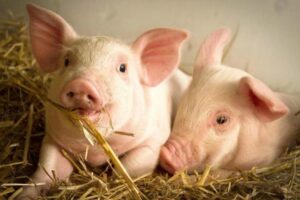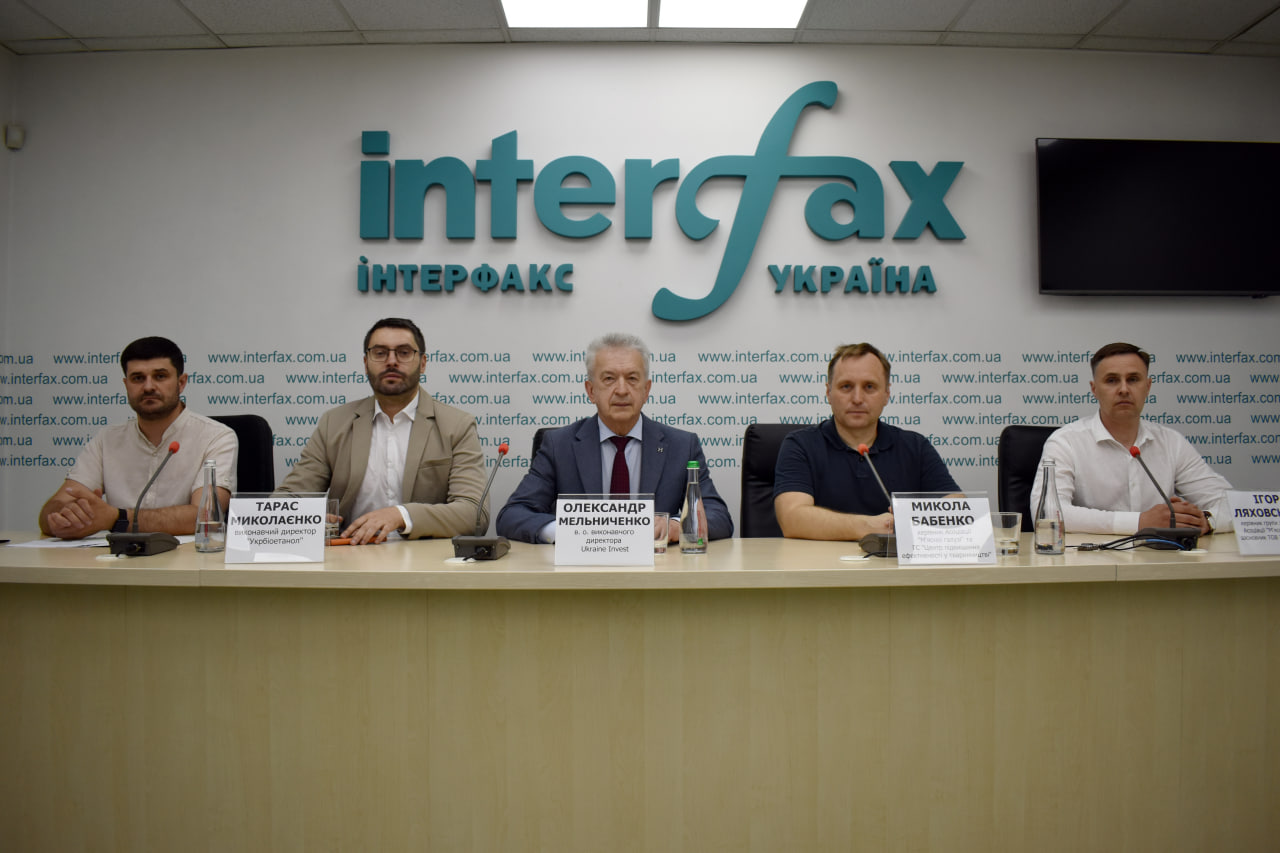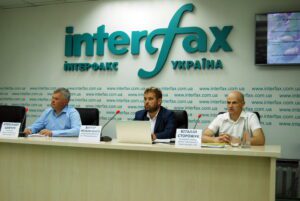
Ukraine has great prospects for increasing the number of pigs up to the levels of 1991, after which they decreased four times.
Mykola Babenko, head of the Meat Industry Association and the Center for Livestock Efficiency, announced this data at a press conference at Interfax-Ukraine on Monday.
“The situation (in the pig industry – IF-U) changed dramatically in 2022 in the world, as well as with grain exports in Ukraine. In fact, Ukraine has lost added value on exported grain. At the same time, value-added industries that can export large volumes with 10 times less logistics requirements remain at the development stage. We are talking primarily about the meat industry,” he said.
According to the head of the industry association, Ukraine currently produces about 600 thousand tons of pork and meets domestic consumption. It is noteworthy that until 2022, the domestic market was not supplied by domestic producers, so Ukraine had to import 10-30% of pork annually to meet consumption.
In 2022, global pork prices doubled, making it economically unfeasible to import pork into the country. At the same time, meat consumption in the country declined. The blocking of grain exports and the loss of economic profitability of grain production, the reorientation of farmers to the production and export of pork are becoming evident, Babenko explained.
He drew attention to the fact that global pork consumption is growing annually by 2 million tons and by 2030, according to the OECD (Organization for Economic Cooperation), its consumption will grow by 16.5 million tons. Ukraine, which produces 600 thousand tons, can and should pay attention to this segment, which is growing dynamically in terms of quantity and value.
Ihor Liakhovsky, Head of the Export Group of the Meat Industry Association and founder of Agro-Invest LLC, reminded that with the outbreak of hostilities in Ukraine, a significant number of consumers who had been driving demand for pork had left. However, farmers were able to increase pig production to pre-war levels.
“Imports of meat products to Ukraine are declining. This is the first bell that indicates the filling of the domestic market. (…) Every week on Friday, representatives of the processing industry and farmers meet to discuss prices and purchasing volumes. (…) We have an outflow of population, and therefore fewer consumers. The main consumer of the domestic market is the Ministry of Defense, which buys 30-35% of the pork produced by industrial producers. If it has made its purchase, it does not enter the market for the next few weeks, and prices fall. Even with a shortage of raw materials, the cost of purchases from processors during this period is reduced,” said the processor.

He is confident that the only way out of the situation to maintain positive dynamics and maintain profitability is to enter foreign markets where Ukrainian quality products can find their place without much effort.
Mr. Lyakhovsky is also convinced that most processing companies are ready to export. According to him, processing companies are not standing still. He emphasized the importance of government support for Ukrainian processors to export and pointed out that the lack of attention to the industry in the current situation threatens to quickly turn the domestic market into a surplus one. After that, farmers’ interest in pig production is likely to decline, and state support and lending to the industry, as well as existing investment programs, will be devalued.
“As of May 1, there are 5.1 million pigs in all categories of farms in Ukraine. Of these, 66.5% are directly accounted for by organized production in industrial enterprises. The number of pigs in the population is constantly decreasing. However, over the past year, there has been a good increase in business enterprises, which has changed the situation in the domestic market,” said Ihor Vyshtak, Director of the Agrarian Development Department of the Ministry of Agrarian Policy and Food.
According to him, in 2023, sales of meat of all types of farm animals amounted to more than 3 million tons, which is 1.3% more than a year earlier. Poultry accounted for 56% of this total, pork for 28%, and beef for only 14%. Vyshtak confirmed that the Ministry of Agrarian Policy understands the prospects of pig production, where it is possible to increase the number of animals in a short time. The ministry also notes a decrease in imports and an increase in domestic production in the domestic market.
Taras Mykolayenko, Executive Director of Ukrbioethanol, who attended the press conference, emphasized the importance of livestock development, which is a related business that affects the development of bioethanol. As an example, he cited the experience of China, which has implemented a program to use 5 percent bioethanol in transport not because of the environment, but for the sake of pig production.
“Before the war, China used to buy 8-12 million tons of corn to produce bioethanol and, consequently, cheap protein. It is used to increase meat production (…) China has borrowed this experience from the Americans and Europeans and is already ranked third in the world in bioethanol production,” he said.
Speaking about America’s experience, Mykolayenko reminded that in this country, 40% of all corn, or 120 million tons, is processed into bioethanol, which is four times more than the total amount of this crop grown in Ukraine. It is bioethanol that has become a companion product that has turned the United States into a world leader in poultry exports.
“Ukraine can get 6 billion euros of added value from the development of dry-fed pig production, and with cheap proteins – bioethanol waste, it can be 12 billion euros, we need to provide Ukraine with cheap proteins. If this is not done, we will always lose competition to the Americans or Europeans who have implemented bioethanol programs,” stated the head of Ukrbioethanol.
He noted that in times of war, it is imperative to develop energy independence, and increasing domestic production of bioethanol will allow Ukraine to reduce imports of petroleum products, which are purchased for more than $400 thousand every hour.
Mr. Mykolayenko also reminded of the importance of adopting the draft law No. 3356-d in the second reading, which will be fundamental for the bioethanol industry.
Oleksandr Melnychenko, Acting Executive Director of UkraineInvest, in turn, emphasized that Ukraine has developed and implemented a system of investment policies and practices in the face of war.
“Ukraine has created modern pro-European investment legislation. Two months ago, the formation of this legislation was completed, and it became fully operational. This legislation includes, in particular, such a concept as attracting significant investments. The Law on State Support for Investors with Significant Investments stipulates that an investor whose investment amounts to EUR 12 million plus ten jobs receives a whole list of preferences from the state,” Melnichenko said.
He mentioned the following preferences: exemption of the investor from VAT, land fees, customs duties, support in obtaining a land plot and others, which allow the investor to receive 30% reimbursement of investment costs, in particular, in the form of reimbursement of costs for transport infrastructure engineering, and a number of other preferences after concluding a special investment agreement.
Melnychenko was reminded that UkraineInvest is already working on and studying a number of investment projects that will be presented to the Ministry of Economy. Particular attention is paid to the processing industry. And not only foreign investors but also national producers can take advantage of this law.
Ihor Vyshtak, Director of the Agrarian Development Department of the Ministry of Agrarian Policy, emphasized that Ukraine has begun the process of screening legislation for its compliance with the European one. By the end of the year, the government expects comments and recommendations on it. After that, export prospects will open up for the pig industry. The government believes that Ukrainian producers will be able to get their products to Africa and North Asia and hopefully to the European Union as well.
The Meat Industry Association invited all those interested in the development of the industry to join the Grain. Pigs. Meat” Forum to be held on June 12 in Kyiv.

The national forest inventory with a total budget of about UAH 60 million and the publication of data on the state of the forest fund will last until 2027 with the publication of an interim total in 2023, head of the production association Ukrderzhslisproekt Viktor Melnychenko said during a press conference at the Interfax-Ukraine agency on Tuesday.
Melnychenko said that the inventory being carried out would provide generalized information for strategic planning in various sectors, including forestry.

He clarified that the State Agency for Forest Resources had appointed Ukrderzhslisproekt to be responsible for the inventory of forests in Ukraine.
The inventory will be carried out in the next five years, after which the information received will be analyzed and the final report prepared for another year. At the same time, the expert noted that the national forest inventory is the only method for determining the currently unknown indicators of natural growth (loss) of forest vegetation, as well as their qualitative and quantitative indicators, which are the main ones in discussions about the intensity of forest use.
“During the period of independence, only two state forest registrations were carried out: in 1996 and in 2011. Conceptually, it is the Research Laboratory that is designed to change the principles of the national forest inventory,” Melnychenko said.
The head of Ukrderzhslisproekt said that during the inventory, 30 specialists from 15 teams would collect more than 50 items of indicators from 18,000 forest plots, where trees have important ecological and economic characteristics. To record all changes occurring in the forest, the control plots will be regularly studied over two five-year cycles, which will make it possible to prepare an array of more than 70 types of reporting data with generalized information about the forests of Ukraine.
According to him, at the moment the project staff numbers 19 people, of which seven teams have been formed, and five more employees will check the objectivity of the information already collected.
The inventory budget for 2021 will amount to UAH 12 million, 90% of which will be used to pay the salaries of workers collecting information in the field. Accordingly, the total budget of the National Forest Inventory for the entire duration of the program is planned at about UAH 60 million.
Melnychenko clarified that data on the state of forests would be made public on a publicly accessible specialized website with information about the national forest inventory. In this case, the maximum statistical error during research will be no more than 3%.
“The inventory data will be a significant source for scientific research, which will contribute to the further improvement of forest inventory characteristics. In the future, the research laboratory will play a key role in the state system of information on forests,” Melnychenko said.
FOREST, FOREST INVENTORY, MELNYCHENKO, PROJECT, UKRDERZHLISPROEKT